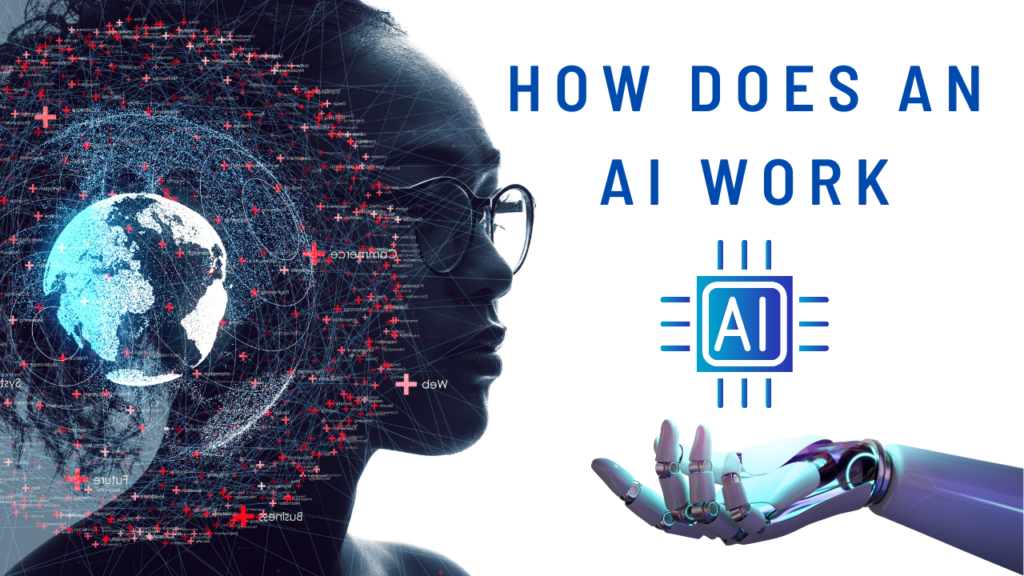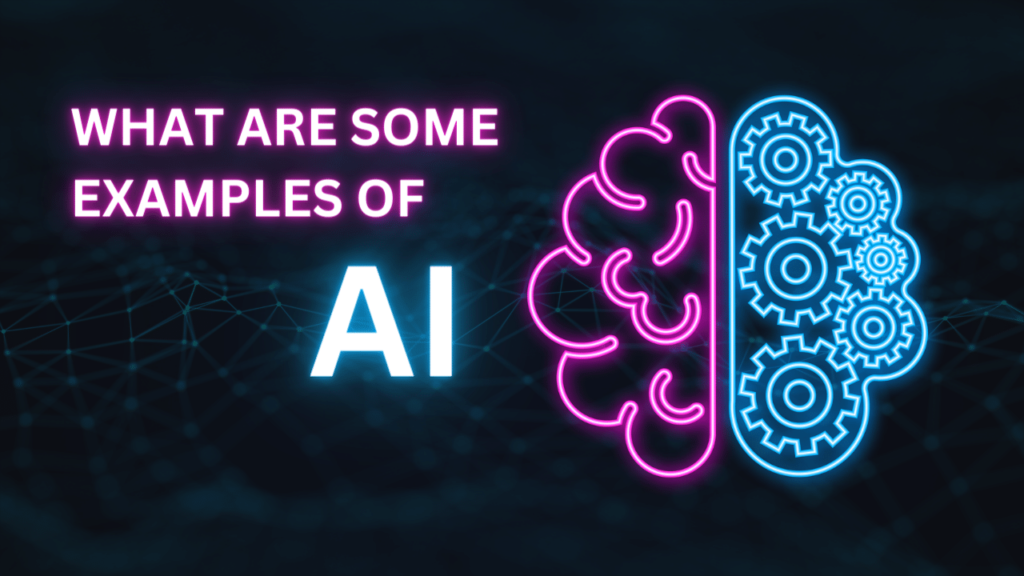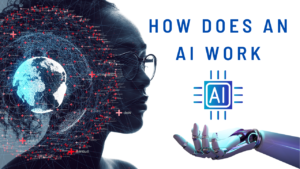How Does an AI Work – The main goal of the branch of computer science known as artificial intelligence (AI) is to build computers that are capable of carrying out activities that traditionally require human intelligence. AI includes a range of methodologies, such as deep learning and machine learning. While machine learning includes training on large datasets to find patterns and make predictions, deep learning uses neural networks to simulate the structure and operation of the human brain. AI systems are used in a variety of fields, including autonomous cars, picture identification, and natural language processing. Weak AI, which is designed for specialized tasks, and strong AI, which is still in the research stage and aims to handle any intellectual task comparable to a person, can be used to classify these systems.

Even though it has the potential to revolutionize society, AI presents serious ethical questions. Privacy, surveillance, prejudice, discrimination, transparency, the development of autonomous weapons, employment displacement, economic inequity, and existential threats are a few of these concerns. How Does an AI Work? The creation of ethical frameworks is crucial to ensuring responsible AI development and use. These frameworks ought to address these moral questions and encourage ethical AI usage. In conclusion, AI aims to build computers with intelligence resembling that of humans. It is dependent on methods like deep learning and machine learning, producing both strong and weak AI. To guarantee that AI is created and utilized ethically, however, ethical frameworks must be established in order to address any possible problems.
What are the ethical concerns surrounding AI?
The potential for AI to revolutionize the world poses a number of ethical questions, including worries about monitoring and privacy, prejudice and discrimination, problems with transparency, autonomous weaponry, job loss, and existential danger. How Does an AI Work? Large-scale data collection and analysis capabilities of AI systems raise the possibility of biases and biased results.
Table of Contents
Due to their difficulties in comprehending and analyzing facts, transparency is difficult. The emergence of autonomous weaponry increases responsibility and enhances the possibility of inadvertent injury. Economic disparity and job loss are further issues. Humanity is imperiled by the long-term dangers of AI, such as the potential for super-intelligent machines. It is essential to create ethical frameworks that assure ethical usage of AI as it develops. We may move towards a more moral future by taking these concerns into account and promoting responsible AI use.
What are some examples of AI?

Even though it has the potential to revolutionize society, AI presents serious ethical questions. Privacy, surveillance, prejudice, discrimination, transparency, the development of autonomous weapons, employment displacement, economic inequity, and existential threats are a few of these concerns. How Does an AI Work? The creation of ethical frameworks is crucial to ensuring responsible AI development and use. These frameworks ought to address these moral questions and encourage ethical AI usage.
In conclusion, AI aims to build computers with intelligence resembling that of humans. How Does an AI Work? It is dependent on methods like deep learning and machine learning, producing both strong and weak AI. To guarantee that AI is created and utilized ethically, however, ethical frameworks must be established in order to address any possible problems. By examining patient data and medical imagery, AI algorithms may identify illnesses. Systems for detecting fraud examine a lot of data to find fraudulent transactions. Machine learning algorithms are used by language translation programs like Google Translate to convert text between languages. More creative uses are anticipated in the future as AI develops.
How can I learn more about AI?
Artificial intelligence (AI) is a fast-expanding topic with a wealth of online learning materials. How Does an AI Work? DataCamp, Coursera, edX, Fast.ai, TensorFlow, PyTorch, AI for Everyone, Machine Learning Mastery, My Curated List of AI and Machine Learning Resources from Around the Web, and Top 18 Free Training Resources for AI and Machine Learning Skills are just a few of the top resources. While Coursera offers a variety of online courses taught by famous academics from prestigious universities, DataCamp gives a thorough manual on learning AI from start.
Computer science and data science courses are available on edX, while deep learning and machine learning courses are available for free on Fast.ai. How Does an AI Work? While PyTorch is an open-source machine learning framework built on the Torch library, TensorFlow is an open-source software library for dataflow and differentiable programming. These sites include a variety of tutorials, courses, and books for studying AI and machine learning techniques.
You should know about TensorFlow and PyTorch.
Popular open-source machine learning libraries used for creating deep learning models include TensorFlow and PyTorch. How Does an AI Work? Google’s TensorFlow is renowned for its scalability, flexibility, and deployment simplicity. It employs a static computational graph, enabling optimization and simple deployment across several platforms. A sizable developer community is available for resources on learning and troubleshooting. Facebook created PyTorch, which is renowned for being straightforward and user-friendly.
It makes use of a dynamic computational network that enables model exploration and debugging. How Does an AI Work? It is simple to connect with other Python libraries because of its Pythonic interface. Compared to TensorFlow, which is scalable, adaptable, and has a sizable development community, PyTorch is simpler to use and offers a Pythonic interface.
Latest posts:
